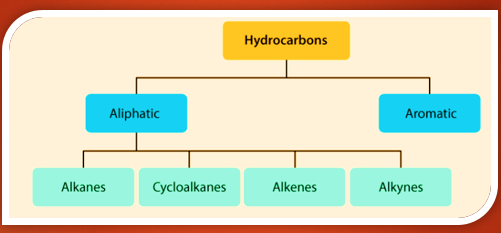We'll be back in a bit !
The system is currently undergoing a routine upgrade to ensure you get the best learning experience. The maintenance is expected to continue till 8:00 pm. Please check back later.
Thank you for your understanding!

The goal of the International Union of Pure and Applied Chemistry (IUPAC) system of nomenclature is to establish a uniform method for naming substances worldwide. The system's goal is to give each structure a distinct name and to match each name to a specific structure.
Organic chemistry nomenclature, often known as IUPAC nomenclature, is a naming convention for compounds containing organic components. In principle, there ought to be a name for every imaginable chemical compound that can be directly translated into a precise structural formula. The IUPAC has its own set of terms for inorganic chemistry.
Basic IUPAC naming rules are frequently followed, especially if it is necessary to give a detailed and unequivocal description of a molecule, which helps keep names short and memorable in everyday speech. It could be easier to use IUPAC words, such as ethanol instead of ethyl alcohol. For relatively simple compounds, they make more sense than memorizing a long list of unrelated names.
Every worthwhile naming system, such as the IUPAC nomenclature, should serve at least two purposes. One of its primary functions is to display the specific chain and ring structures formed by the carbon atoms in a molecule. The second step is to find and characterize the compound's functional groups. Hydrogen's number and location in organic compounds are typically inferred from carbon's tetravalency because hydrogen is such a ubiquitous component.
Alkanes are hydrocarbons that have a single bond which means they are saturated. They follow a homologous series having a basic molecular formula of CnH2n+2 where any integer makes up this range of compounds. According to IUPAC nomenclature, Methane is parent member of family and the chemical formula CH4
IUPAC nomenclature of first five alkanes are as follows:-
Alkynes are hydrocarbons with triple bonds of carbon-carbon, respectively. A series that is homologous having a basic molecular formula of CnH2n-2 .According to IUPAC nomenclature, Ethyne is a parent member of family and the chemical formula is C2H2. The ‘yne’ suffix indicates an alkyne or cycloalkyne (ending).
IUPAC names of first five alkyne are as follows:
Unsaturated Carbon Chains – Alkene Formula
Alkene molecules can be identified by their double bond. A and a covalent bond combine to form this bond. Because of this, chemists call a bond an unsaturation element. At a given carbon chain length, each unsaturation results in two less hydrogen atoms in the formula for the saturated compound. Extended alkene chains contain only single covalent connections between their extra carbon atoms. Each carbon atom is likewise linked to four hydrogen atoms, creating four individual covalent bonds. In carbon chains containing four or more carbon atoms, the position of the double bond can take on alternative configurations, giving rise to structural isomers.
According to IUPAC nomenclature, Ethyne is a parent member of the family and the chemical formula is C2H4.
An alkene is indicated by the ene suffix (ending).
The root word must include each atom of carbon of the unsaturated bond in its chain that is longest.
The numbering of the root chain must begin at the end closest to a carbon double bond atom. The closest substituent criterion is used to identify where the counting starts at the end of the chain if the pi(double) bond is in the middle.
The pi(double) bond identifier is the smaller of the 2 integers that represent the pi bond's carbon atoms. If the molecule seems to have more than one pi bond, it is given a diene, triene, or similar prefix to indicate the number of pi bonds, as well as an identifier number for each pi bond.
IUPAC names of first five alkene are as follows:-
The IUPAC method is commonly used to name alkenes. Alkenes are composed of hydrogen and carbon atoms with at minimum one double (pi) bond in their chain of carbon. The compounds in this collection are arranged in a series that is homologous with the fundamental molecular formula CnH2n., where n is any number more than 1.
Ethene, the most basic alkene, has 2 carbon atoms and the chemical formula C2H4. With the ending "-ene" as well as an infixed value marking the position of the carbon in the chain, with the smaller number indicating each double bond, alkenes are labelled after their parent alkane chain.
It can be concluded that The IUPAC system of nomenclature was created to create a worldwide standard for naming chemicals in order to ease communication. The goal of the system is to give every compound a unique and unambiguous name, as well as to connect each name to a unique and clear structure. Suffixes and prefixes are used to prioritize any deviations, whether they involve multiple bonds or atoms other than hydrogen and carbon. Throughout the article, the nomenclature of alkene, alkane, and alkyne is mostly discussed.
How does one prioritize functional groups?
Ans. If the central carbon is in a higher oxidation state, the functional group is given preference. As a result, carboxylic acids take precedence over alcohols, etc.
Draw structure of 2-methyl-3-pentyne?
The word pentyne indicates that there are carbons and triple bonds which are at 3rd carbon and methyl group is at 2nd carbon.
What is IUPAC's name of
Ans. The IUPAC name of compound is But-1-ene as it consists of 4 carbon and one double bond so it belongs to the category of alkene.
